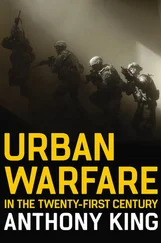Soviet leaders stuck with a conservative attitude toward tank design and production throughout the war and it paid off handsomely. By late 1943 the Red Army had six tank armies which contained up to 30 per cent of its available armour and a small cadre of veteran front leaders such as Vatutin, Rokossovsky, Bagramyan and Konev, who learned to employ these armoured fists to achieve operational-level victories. Yet the Red Army could not have smashed German army groups just with superior numbers – that method had failed repeatedly in 1941–42. Instead, the Red Army learned how to mass its artillery to achieve breakthroughs and to employ its engineers in mobility and counter-mobility roles. By the time of Kursk, the Soviets learned that a minefield covered by fire from concealed anti-tank guns was the best answer to the Tiger or Panther, yet the Germans never really improved their mine-clearing skills. The Soviet ability to quickly refit decimated tank armies and redeploy them long distances without being detected was another skill that contributed greatly to the Soviet victory over the Panzer-Divisionen. Soviet expert use of Maskirovka (deception) allowed the Red Army to gain the advantage of surprise again and again over German commanders who could not understand that their opponents were evolving.
The Soviet failure to invest in developing armoured personnel carriers for their infantry, better reconnaissance vehicles and mobile flak guns were serious technical mistakes that proved costly in battle, but Lend-Lease deliveries of US-made halftracks and reconnaissance vehicles helped to partly rectify this deficiency by the last year of the war. Could the Red Army have defeated Germany’s armoured forces without Lend-Lease? This is doubtful for a number of reasons. Although the quality of many Lend-Lease tanks was poor, the quality of the trucks, halftracks and other support vehicles was not and without these vehicles, the Red Army’s ability to conduct Deep Operations would have been severely impaired. Another factor is that the supply of aluminum, machine tools and other key raw materials enabled the Soviet Union to rapidly expand its tank production despite the loss of so much of its own territory and resources; without this assistance, Soviet tank production would likely have been reduced by one-third. It is highly unlikely that the Red Army would have had the mobility and the numbers necessary to conduct the sweeing advances of 1944–45 without Allied Lend-Lease aid.
Yet Soviet armoured tactics were undermined throughout the war by the lack of training provided to Soviet tankers in comparison to their opponents. In 1945, some Guards tank units were afforded special gunnery training, but for most of the war Soviet tankers went into battle with inadequate gunnery training and poor communications due to the limited number of radios. These limitations – which could have been mitigated – gave an enormous advantage to German tankers and help to explain many of the lop-sided kill ratios. Yet Stalin and his Kremlin cronies were not interested in improving military training since they regarded this as a step toward professionalism and elitism, which was dangerous for the authority of the party. Instead, Stalin accepted heavy losses as the price of victory and only cared about losses when it affected mission outcomes. Nevertheless, the Red Army eventually developed a veteran armoured force by 1945 that was capable of achieving any mission assigned and had surpassed the capabilities of the German Panzer-Divisionen even in their prime.
Appendix II
Armour Order of Battle, 1 July 1943
German
Heeresgruppe Nord (Generalfeldmarschall Georg von Küchler)
16.Armee (Generalfeldmarschall Ernst Busch)
○ 18.Panzer-Grenadier-Division (Generalleutnant Werner von Erdmannsdorff)
○ Sturmgeschütz-Abteilung 184
○ 18.Armee (Generaloberst Georg Lindemann)
○ Sturmgeschütz-Abteilung 226
○ Sturmgeschütz-Abteilung 912
○ schwere Panzer-Abteilung 502
Heeresgruppe Mitte (Generalfeldmarschall Günther von Kluge)
3.Panzerarmee (Generaloberst Georg-Hans Reinhardt)
• XXXXIII Armeekorps (General der Infanterie Karl von Oven)
○ 20.Panzer-Grenadier Division (Generalmajor Georg Jauer)
• Army Reserves:
○ 8.Panzer-Division (Generalmajor Sebastian Fichtner) {1}
4. Armee (Generaloberst Hans von Salmuth)
• Sturmgeschütz-Abteilung 270
• Sturmgeschütz-Abteilung 667
2.Armee (Generaloberst Walter Weiss)
9.Armee (Generaloberst Walther Model)
XLVI Panzer-Korps (General der Infanterie Hans Zorn )
• 7.Infanterie-Division (Generalleutnant Fritz-Georg von Rappard)
○ 2./Sturmgeschütz-Abteilung 909
• 31.Infanterie-Division (Generalleutnant Friedrich Hoβbach)
○ 1.,3/Sturmgeschütz-Abteilung 909
• 258.Infanterie-Division (Generalleutnant Hanskurt Höcker)
○ 6./Panzer-Regiment 29 [Pz IV]
○ 2./Panzerjäger-Abteilung 2 [Marder]
XXXXI Panzer-Korps (General der Panzertruppen Josef Harpe )
• 18.Panzer-Division (Generalmajor Karl-Wilhelm von Schlieben)
• 86.Infanterie-Division (Generalleutnant Helmuth Weidling)
○ schwere Panzerjäger-Abteilung 654 [Ferdinand]
○ Panzerkompanie (Fkl) 313
○ Sturmgeschütz-Abteilung 177
• 292.Infanterie-Division (Generalleutnant Wolfgang von Kluge) WIA 20 July
○ schwere Panzerjäger-Abteilung 653 [Ferdinand]
○ Panzerkompanie (Fkl) 314
○ Sturmgeschütz-Abteilung 244
• schwere Panzerjäger Regiment 656 :
○ Sturm-Panzer-Abteilung 216 [Sturmpanzer]
XXXXVII Panzer-Korps (General der Panzertruppen Joachim Lemelsen )
• 2.Panzer-Division (Generalleutnant Vollrath Lübbe)
• 9.Panzer-Division (Generalleutnant Walter Scheller)
• 20.Panzer-Division (Generalmajor Mortimer von Kessel)
• 6.Infanterie-Division (Generalleutnant Horst Groβmann)
○ 1.,2./schwere Panzer-Abteilung 505
○ Panzerkompanie (Fkl) 312 (Leutnant Nolte)
• Sturmgeschütz-Abteilung 245
• Sturmgeschütz-Abteilung 904
XXIII Armeekorps (General der Infanterie Johannes Frießner)
○ Sturmgeschütz-Abteilung 185
○ Sturmgeschütz-Abteilung 189
Group Esebeck (9.Armee Reserve):
• 4.Panzer-Division (Generalleutnant Dietrich von Saucken)
• 12.Panzer-Division (Generalmajor Erpo Freiherr von Bodenhausen)
• 10.Panzer-Grenadier-Division (Generalleutnant August Schmidt)
2.Panzerarmee(General der Infanterie Heinrich Clößner)
LIII Armeekorps (Generalleutnant Friedrich Gollwitzer)
• 25.Panzer-Grenadier-Division (Generalleutnant Anton Grasser)
• 5.Panzer-Division (Generalmajor Ernst Felix Fäckenstedt)
• Sturmgeschütz-Abteilung 202
• Sturmgeschütz-Abteilung 904
Heeresgruppe Süd (Generalfeldmarschall Erich von Manstein)
4.Panzerarmee (Generaloberst Hermann Hoth)
• XLVIII Panzerkorps (General der Panzertruppen Otto von Knobelsdorff) {2}
○ 3.Panzer-Division (Generalleutnant Franz Westhoven)
○ 11.Panzer-Division (Generalmajor Johann Mickl)
○ Panzer-Grenadier Division Groβdeutschland (Generalleutnant Walter Hörnlein)
○ 10.Panzer Brigade (Oberst Arnold Hans Albert Burmeister) Oberst Karl Decker
▪ Panzer-Regiment 39 (Major Meinrad von Lauchert)
Читать дальше
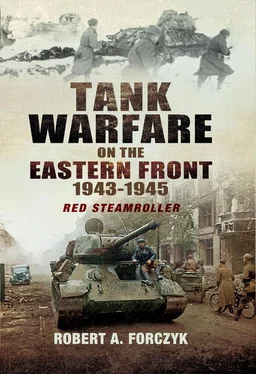




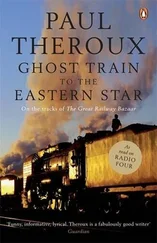
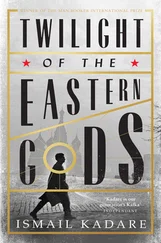
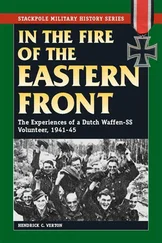

![John Stieber - Against the Odds - Survival on the Russian Front 1944-1945 [2nd Edition]](/books/405234/john-stieber-against-the-odds-survival-on-the-russian-front-1944-1945-2nd-edition-thumb.webp)


